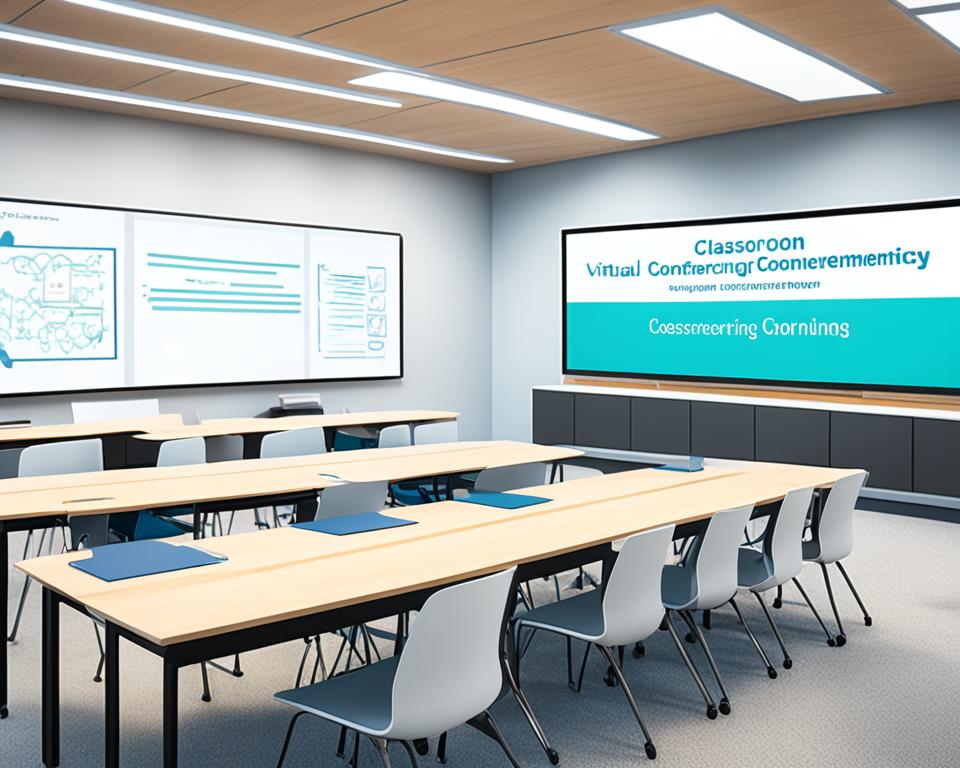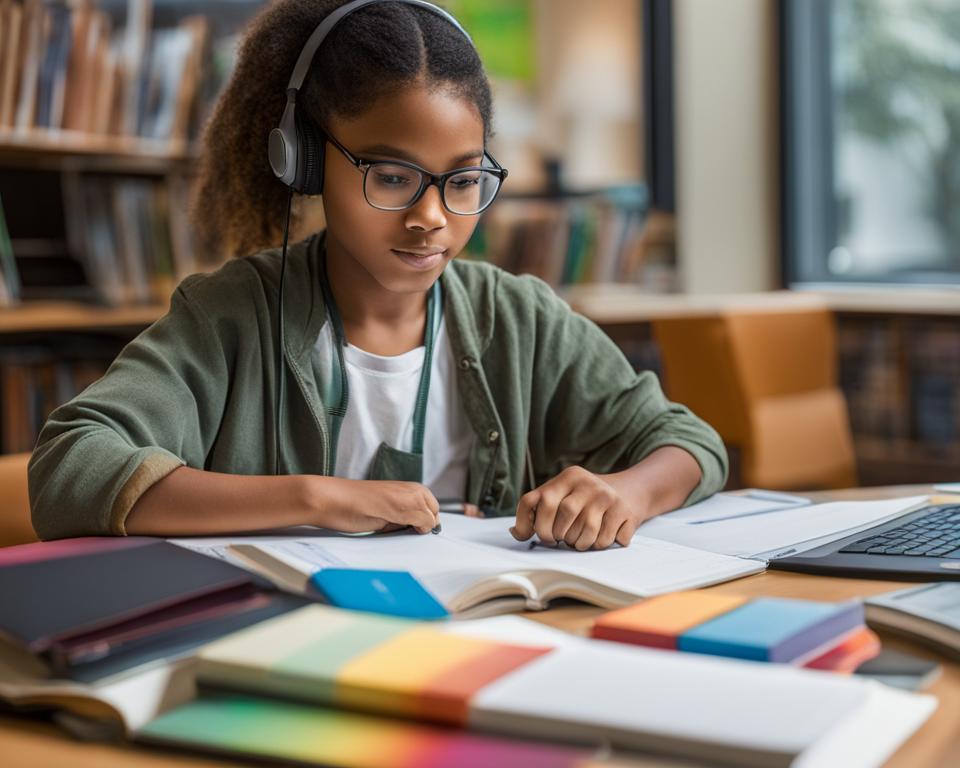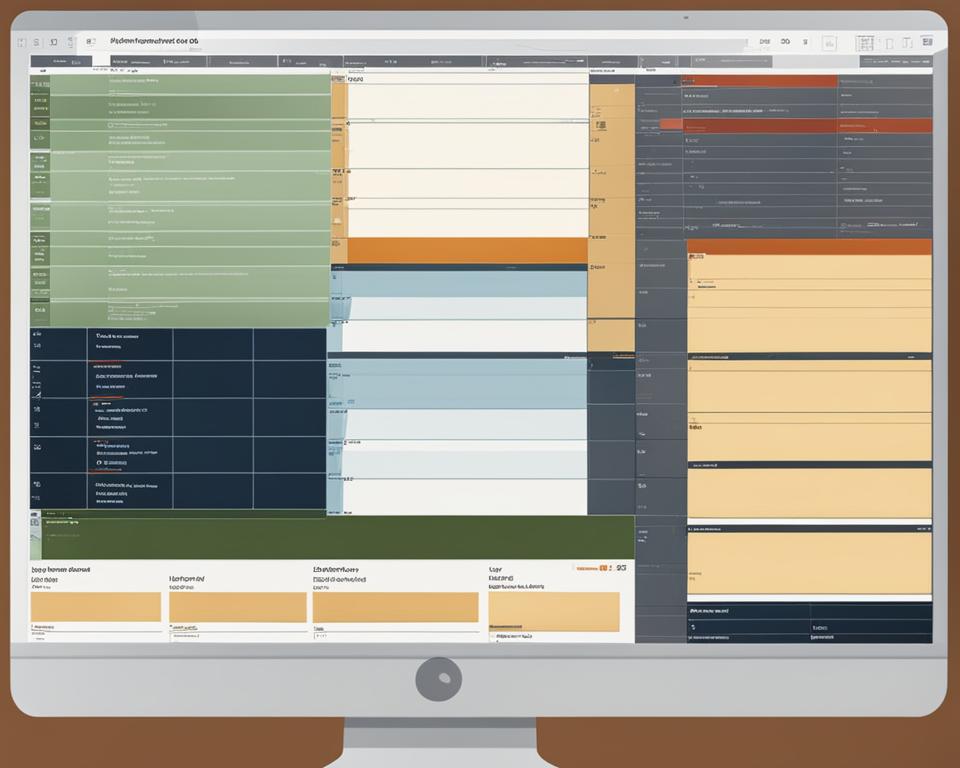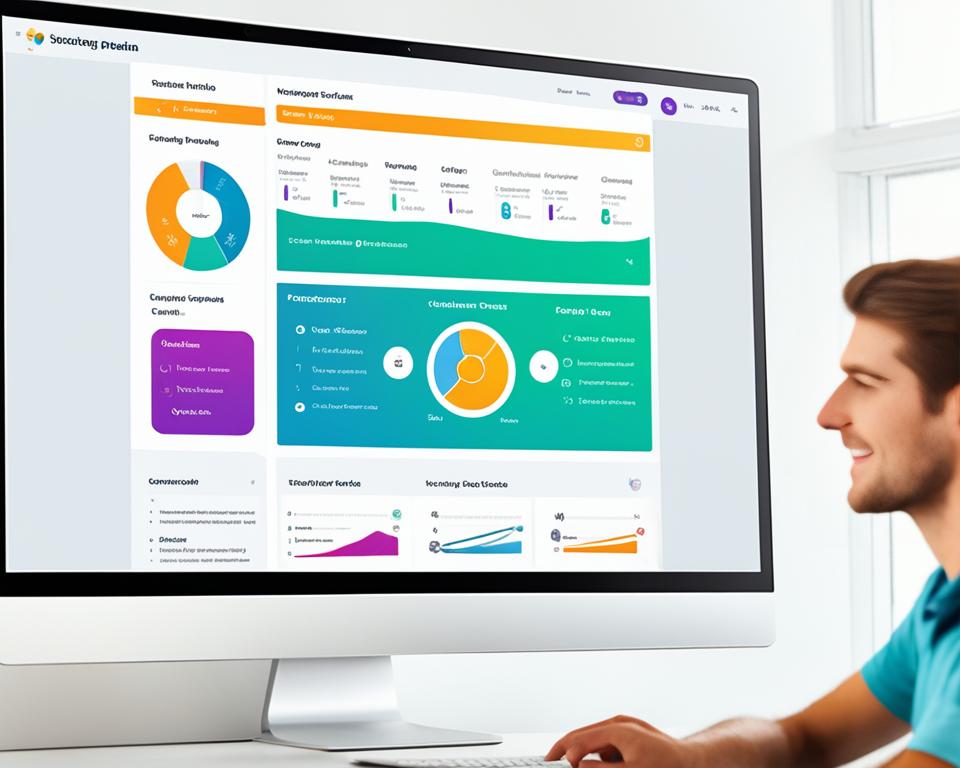As the world continues to adapt to the ongoing challenges of the COVID-19 pandemic, education has undergone a significant transformation. With the closure of schools and the need for social distancing, educators have had to find alternative ways to deliver instruction to their students. Remote instruction has emerged as a viable solution, allowing teachers and students to connect virtually and continue the learning process.
Remote instruction offers a range of options for educators, enabling them to utilize online learning platforms and virtual teaching tools. These resources provide an opportunity to create engaging and interactive learning experiences, regardless of physical location. By embracing these remote instruction options, educators can ensure that students are still able to receive a high-quality education from the comfort and safety of their homes.
In this article, we will explore the various remote instruction options available to educators. From online learning platforms to virtual teaching tools, we will delve into the possibilities that can make remote learning a seamless and effective experience for both educators and students. Let’s take a closer look at how these options can enhance the learning journey in the digital age.
Key Takeaways:
- Remote instruction options provide educators with the tools to deliver seamless learning experiences online.
- Online learning platforms and virtual teaching tools enable educators to engage students in interactive learning activities.
- Remote instruction allows for continued education regardless of physical location.
- Exploring remote instruction options can ensure the delivery of a high-quality education in a remote learning environment.
- Remote instruction fosters adaptability and prepares students for digital-age learning experiences.
Getting Started with Remote Instruction
When it comes to implementing remote instruction, the first step is to explore the available options and choose the right tools for creating an online classroom environment. Educators can reach out to their school administration for a list of online tools that they have access to. Some popular options include:
- Video conferencing platforms like Google Hangouts Meet
- Screencasting tools like Screencast-O-Matic
- Course builders like PBS LearningMedia Lesson Builder
“The ability to create a seamless classroom experience online is crucial in remote instruction. By utilizing video conferencing platforms, screencasting tools, and course builders, educators can provide a high-quality learning environment for their students.”
Setting up a virtual classroom can seem overwhelming at first, but with the right tools, it can be a smooth transition. Video conferencing platforms allow educators to conduct live classes and engage with their students in real-time. Screencasting tools enable educators to record their lessons and share them with students for asynchronous learning. Course builders provide a structured environment for organizing and delivering content.
Keep in mind that the choice of tools may depend on your specific needs and the age group you are teaching. It’s always important to consider the accessibility and usability of the tools for both educators and students.
In order to create an effective online classroom, educators should also consider the following:
- Choosing a platform that supports interactive features such as chat, polling, and screen sharing.
- Ensuring that the chosen platform is compatible with the devices and internet connections available to both educators and students.
- Providing clear instructions and guidelines for students on how to navigate the online classroom environment.
- Offering technical support and troubleshooting assistance to address any issues that may arise.
- Regularly assessing the effectiveness of the chosen tools and making adjustments as needed.
By carefully selecting the right tools and creating a virtual classroom environment, educators can ensure a smooth transition to remote instruction and provide a seamless learning experience for their students.
| Platform | Features |
|---|---|
| Google Hangouts Meet | High-quality video conferencing, screen sharing, chat, and collaboration tools. |
| Screencast-O-Matic | Record and share screen captures, webcam videos, and audio narrations with ease. |
| PBS LearningMedia Lesson Builder | Create interactive lessons using multimedia resources from PBS LearningMedia’s vast library. |
Benefits of Online Tools for Remote Instruction
Online tools offer numerous advantages for remote instruction:
- Engagement: Interactive features keep students actively involved in the learning process.
- Flexibility: Students can access learning materials at their own pace and convenience.
- Collaboration: Tools like chat and discussion forums foster collaboration and peer interaction.
- Assessment: Online tools provide opportunities for formative and summative assessments.
With the right tools, educators can create a dynamic and interactive classroom environment online, ensuring that students continue to receive a quality education, regardless of the learning environment.
Effective Communication in Remote Instruction
Communication plays a vital role in the success of remote instruction. In order to create a seamless learning environment, educators need to implement effective communication strategies that ensure clear and consistent information flow. By setting a schedule and adhering to it, educators can establish routine and provide structure for students and families.
“Setting a schedule and sticking to it helps students and families know what to expect and creates a sense of normalcy in an otherwise uncertain situation.”
One of the key aspects of effective communication in remote instruction is clearly conveying expectations. Educators should ensure that students understand the objectives, assignments, and deadlines, so they can stay on track with their learning. By providing detailed instructions and guidelines, educators can help students navigate the remote learning process more smoothly.
Additionally, finding ways to give and receive feedback is crucial for student growth and progress. Through regular feedback, educators can assess student understanding and make necessary adjustments to their instruction. Students can also benefit from receiving feedback on their work, as it helps them gauge their performance and make improvements.
There are various tools available to facilitate communication in remote instruction. Google Docs, for example, allows educators and students to collaborate in real-time, providing a platform for shared documents and feedback. Video conferencing tools, such as Zoom or Microsoft Teams, enable face-to-face interactions and foster a sense of community among students.
Benefits of Effective Communication in Remote Instruction
Implementing effective communication strategies in remote instruction offers several benefits:
- Improved student engagement: Clear communication helps students stay engaged and motivated, as they have a clear understanding of expectations and objectives.
- Enhanced learning outcomes: Regular feedback and communication allow educators to tailor their instruction to meet individual student needs, leading to improved learning outcomes.
- Strengthened relationships: Communication fosters a sense of connection between educators, students, and families, creating a supportive learning community.

| Communication Strategies | Benefits |
|---|---|
| Setting a clear schedule | Establishes routine and provides structure |
| Clearly conveying expectations | Helps students understand objectives and assignments |
| Providing feedback | Assesses student understanding and promotes growth |
| Utilizing communication tools | Facilitates collaboration and interaction |
Finding High-Quality Online Content for Remote Instruction
In order to provide engaging and relevant instruction, educators need to find high-quality online content that aligns with their class content. Accessing trusted sources is crucial to ensure accurate information and reliable resources for students. Fortunately, there are various platforms available that offer curated resources and interactive lessons across a range of subjects.
Trusted Online Platforms for Content Resources
Educators can explore the following platforms to discover high-quality online content:
- PBS LearningMedia: PBS LearningMedia provides access to a vast collection of multimedia resources, including videos, lesson plans, and interactive activities. These resources are designed to engage learners of all ages and cover a variety of subjects.
- Desmos: Desmos offers interactive math tools and activities that enable educators to create engaging math lessons for students. The platform provides graphing calculators, geometry tools, and more.
- GeoGebra: GeoGebra is a versatile platform that offers interactive tools for teaching and learning mathematics, science, and other STEM subjects. Educators can create and share interactive worksheets, graphs, and simulations to enhance student understanding.
- NYTimes Learning Network: The New York Times Learning Network provides educational resources based on articles from The New York Times. These resources include lesson plans, writing prompts, quizzes, and more, covering a wide range of topics.
- Newsela: Newsela offers a collection of news articles at different reading levels, allowing educators to provide differentiated reading materials for their students. The articles cover various subjects, making it a valuable resource for cross-curricular instruction.
- Ted-Ed: Ted-Ed hosts a vast library of educational videos and engaging lessons created by educators and experts. The platform covers a wide range of topics, ensuring there is something for every subject area.
- Khan Academy: Khan Academy provides a comprehensive library of video lessons, practice exercises, and quizzes across various subjects, including math, science, history, and more. The platform offers a structured curriculum that supports personalized learning.
- YouTube: YouTube is a treasure trove of educational content created by educators, organizations, and individuals. By searching for specific topics or channels, educators can discover valuable instructional videos and tutorials.
These platforms offer a wealth of resources to support remote instruction. Educators can utilize the curated content available on these platforms to supplement their lessons and engage students in meaningful ways. Additionally, these platforms often provide interactive features, allowing students to actively participate in their learning experiences.
To ensure the credibility of online content, educators should refer to trusted sources and verify the accuracy and relevance of the resources they find. Trusted sources include reputable educational institutions, subject-specific organizations, and established publishers.
Balancing Communication and Collaboration in Remote Learning
In a remote learning environment, providing opportunities for effective communication and collaboration is crucial for student engagement and learning. By leveraging online communication tools and collaboration platforms, educators can create a collaborative virtual classroom that fosters student interaction and participation.
One effective way to promote communication in remote learning is through online office hours. Educators can schedule dedicated time slots where students can connect with them virtually to ask questions, seek clarification, and receive individualized support. This personalized interaction helps students feel connected and supported, improving their overall learning experience.
Class discussions are another valuable tool for fostering communication and collaboration among students. Through online discussion forums or video conferencing platforms, students can engage in meaningful conversations, share ideas, and learn from one another. These discussions encourage critical thinking and allow students to gain different perspectives on the topics being discussed.
“Effective communication is essential in remote learning as it nurtures student engagement and facilitates a deeper understanding of the subject matter.”
Peer feedback is an integral part of the learning process and can be facilitated through online collaboration tools. By using platforms such as Google Docs or Microsoft Teams, students can collaborate on assignments, provide feedback on each other’s work, and engage in productive discussions. This peer-to-peer interaction not only enhances learning but also promotes teamwork and collaboration skills.
Video presentations are another effective way to encourage communication and collaborative learning in a remote environment. Students can utilize video conferencing platforms like Zoom or Microsoft Teams to present their work to the class, fostering engagement and enabling their peers to provide feedback and ask questions. This interactive format allows students to showcase their learning and learn from their classmates.
The Benefits of Online Communication and Collaboration Tools:
- Facilitate effective communication between students and educators.
- Promote peer-to-peer collaboration and learning.
- Create an inclusive and interactive virtual classroom environment.
- Encourage critical thinking and different perspectives.
- Develop teamwork and collaboration skills.
Recommended Tools for Remote Communication and Collaboration:
| Tool | Description |
|---|---|
| Google Hangouts | A free video conferencing tool for online meetings and discussions |
| Skype | A popular platform for video calls, messaging, and collaboration |
| Microsoft Teams | A comprehensive collaboration platform with chat, video calls, and file sharing |
| Zoom | A video conferencing platform with interactive features like screen sharing and breakout rooms |
By utilizing these communication and collaboration tools, educators can effectively balance the needs of remote learning, fostering engagement, and promoting collaborative learning experiences for their students.
Next, we will explore how to design authentic learning experiences in remote instruction, enabling students to apply their knowledge and skills in real-world scenarios.
Authentic Learning Experiences in Remote Instruction
Remote instruction presents a unique opportunity for educators to create authentic learning experiences that foster active learning, critical thinking, creativity, and problem-solving skills. By implementing strategies such as project-based learning and design thinking, educators can engage students in meaningful tasks that have real-world relevance.
Active Learning for Meaningful Engagement
Active learning is a teaching approach that encourages students to take an active role in their own learning process. In remote instruction, educators can incorporate active learning strategies by designing activities that require student participation, collaboration, and reflection.
One example is the use of case studies or simulations, where students are presented with real-world scenarios and are challenged to apply their knowledge and skills to solve problems or make informed decisions. This not only enhances their understanding of the subject matter but also promotes critical thinking and problem-solving skills.
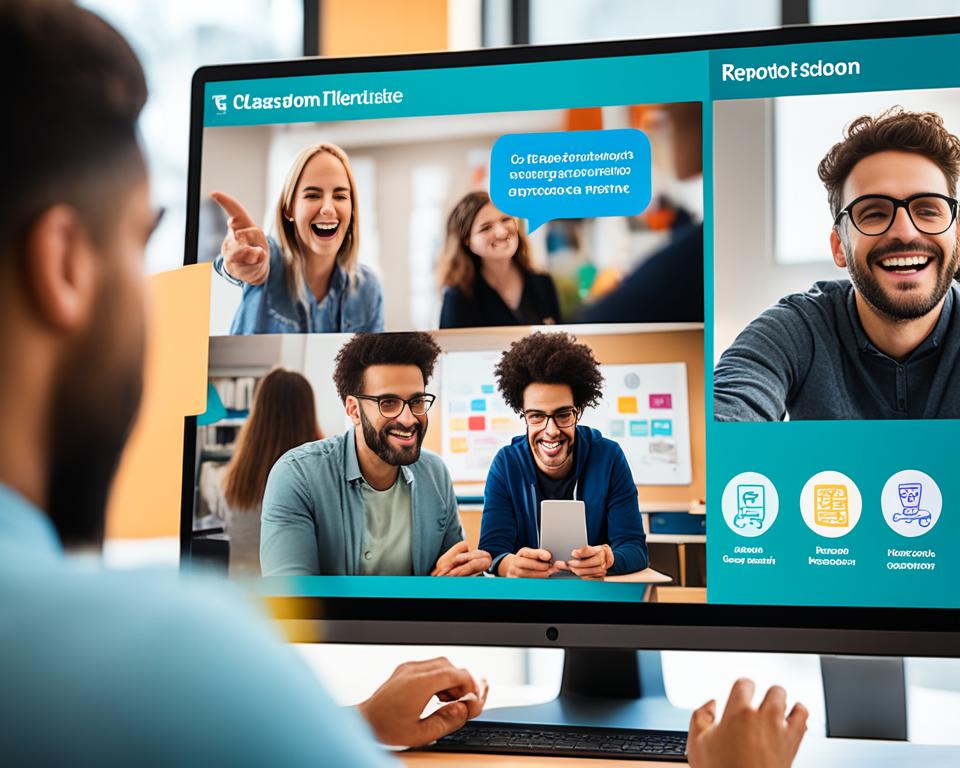
Project-Based Learning for Real-World Application
Project-based learning is another effective approach that educators can employ in remote instruction. This method involves students working on a project or task that requires them to investigate, explore, and create a tangible outcome.
For example, in a science class, students can be assigned a project to design and build a model of a renewable energy system. They would need to research different forms of renewable energy, evaluate their pros and cons, and design a model that demonstrates their understanding.
Project-based learning not only encourages active learning but also promotes collaboration, creativity, and problem-solving skills. It provides students with an opportunity to apply what they have learned in a real-world context, making their learning experience more authentic and meaningful.
The Benefits of Authentic Learning Experiences
Implementing authentic learning experiences in remote instruction offers several benefits to students. By connecting classroom learning to real-world applications, students gain a deeper understanding of the subject matter and the relevance of their education.
Engaging in active learning and project-based tasks also fosters creativity and critical thinking skills, preparing students for success in an evolving and dynamic world. Furthermore, authentic learning experiences promote student motivation and engagement, as they can see the direct impact of their efforts.
| Benefits of Authentic Learning Experiences in Remote Instruction | |
|---|---|
| Deeper understanding of subject matter | Relevance and real-world applications |
| Enhanced critical thinking and problem-solving skills | Preparation for success in a dynamic world |
| Increased motivation and engagement | Visible impact of student efforts |
Showcasing Student Understanding in Remote Instruction
In a remote learning environment, educators have the opportunity to provide platforms and tools for students to showcase their understanding through digital presentations. These digital tools enable students to express their knowledge, engage in discussions, and share resources with their peers.
Digital Presentation Platforms
There are several platforms available that allow students to create multimedia presentations that demonstrate their learning. Some popular options include:
- Buncee
- Flipgrid
- Nearpod
- Padlet
These platforms offer a variety of features that empower students to showcase their understanding in creative and interactive ways. For example, Buncee allows students to create visually appealing presentations using templates, images, and videos. Flipgrid enables students to engage in video discussions where they can share their thoughts and responses. Nearpod and Padlet provide opportunities for students to collaborate and share resources with their peers.
Using these digital presentation platforms, students can take their learning beyond traditional written assignments and explore new ways of expressing their understanding. These tools not only allow for creativity and self-expression but also foster engagement and collaboration in the remote learning environment.
Engaging with Peers
Remote instruction doesn’t have to be isolating. Through the use of digital tools, students can interact and engage with their peers, even when physically apart. Platforms like Flipgrid and Padlet provide opportunities for students to comment on each other’s presentations, fostering a sense of community and encouraging peer-to-peer learning.
“The ability for students to engage with one another’s work and provide feedback is invaluable, especially in a remote learning environment.” – Jane Smith, Educator
By showcasing their work and engaging with their peers’ presentations, students can learn from each other and gain a deeper understanding of the subject matter. This collaborative approach to remote instruction strengthens critical thinking skills and promotes a sense of belonging within the virtual classroom.
Teacher Feedback and Evaluation
Remote instruction also allows educators to provide timely feedback and evaluate student presentations. Through the use of digital tools, educators can review and assess student work, providing valuable insights and guidance for improvement.
When evaluating student presentations, educators can consider criteria such as content knowledge, creativity, organization, and presentation skills. Providing constructive feedback helps students refine their understanding, build upon their strengths, and identify areas for growth.
Comparison of Digital Presentation Platforms
| Platform | Features | Benefits |
|---|---|---|
| Buncee | Templates, multimedia integration, collaboration | Visually appealing presentations, creative expression, collaboration |
| Flipgrid | Video discussions, commenting, peer engagement | Engagement with peers, community building, self-expression |
| Nearpod | Interactive multimedia, collaboration, assessment | Engagement, collaboration, formative assessment |
| Padlet | Collaborative boards, commenting, resource sharing | Collaboration, peer feedback, resource sharing |
By utilizing these digital presentation platforms and engaging in peer discussions, students can effectively demonstrate their understanding, learn from their peers, and receive valuable feedback from their educators. These platforms enhance the remote learning experience and provide students with an opportunity to showcase their knowledge and skills in a dynamic and interactive manner.
Evaluating Comfort Zones in Remote Instruction
Implementing remote instruction may require educators and students to step out of their comfort zones. It’s important for educators to assess their own comfort level with different technologies and provide support to students as they navigate the virtual learning environment.
As educators embrace remote instruction options, it’s essential to consider their technology comfort level. Some educators may already be familiar with online tools and platforms, while others may need more time to adapt and gain confidence in using new technology.
Creating a space for students to provide feedback and express their concerns is crucial in helping educators tailor their instruction to meet their students’ needs. By actively seeking student feedback, educators can obtain valuable insights into the effectiveness of their remote teaching methods and make necessary adjustments.
It’s also important for educators to understand that students may have varying levels of technology comfort. While some students may be technologically savvy and adapt quickly to remote instruction, others may experience challenges and require additional guidance and support.
Support for Educators
Educators can take the following steps to evaluate their comfort zones and enhance their technology skills:
- Identify areas where they feel less comfortable with technology.
- Seek professional development opportunities and training to enhance their knowledge and skills in those areas.
- Collaborate with colleagues who have expertise in specific technologies to gain insights and guidance.
- Experiment with different remote instruction tools and techniques to build confidence and familiarity.
Addressing Student Comfort Level
To ensure that all students can effectively participate in remote instruction, educators can:
- Provide clear instructions and demonstrations on how to use the required tools and platforms.
- Offer additional support and resources to students who may struggle with technology.
- Establish communication channels where students can ask questions and seek assistance.
- Encourage peer-to-peer support and collaboration among students to foster a sense of community and shared learning.
Creating a supportive and inclusive remote learning environment requires educators to evaluate their own comfort zones with technology and provide the necessary assistance for students. By actively seeking feedback and adapting their instruction to meet student needs, educators can ensure a successful remote learning experience for all.
Conclusion
As educators continue to navigate the challenges of remote instruction, it is crucial to embrace the available options for providing seamless learning experiences. By utilizing online learning platforms, virtual teaching tools, and effective communication strategies, educators can ensure that their students continue to receive a high-quality education, regardless of the learning environment.
The transition to remote instruction has prompted the exploration and adoption of various remote education tools. Online learning platforms offer a wide range of features, from video conferencing to interactive whiteboards, enabling educators to engage students in dynamic virtual classrooms. Virtual teaching tools allow for the creation of interactive lessons, assessments, and collaborative activities that promote active learning and critical thinking.
Furthermore, effective communication is key in remote instruction. Establishing clear expectations, providing regular feedback, and encouraging ongoing dialogue with students and families are essential for maintaining a supportive learning environment. By leveraging tools like video conferencing, educators can foster real-time interaction and facilitate meaningful student engagement.
In conclusion, by embracing remote instruction options, educators can create seamless learning experiences that prioritize student success. The use of remote education tools and effective communication strategies enables educators to provide engaging and interactive lessons, ensuring that students receive a high-quality education regardless of the learning environment. Through continued exploration and innovation, remote instruction has the potential to revolutionize the way we approach education, offering new opportunities for personalized and adaptable learning experiences.
FAQ
What are some options for remote instruction?
Some options for remote instruction include online learning platforms and virtual teaching tools that provide a seamless learning experience.
How can educators get started with remote instruction?
Educators can start by exploring online tools and creating an online classroom environment.
How can effective communication be maintained in remote instruction?
Effective communication can be maintained through setting schedules, clearly communicating expectations, and utilizing tools for feedback.
Where can educators find high-quality online content for remote instruction?
Educators can find high-quality online content from platforms like PBS LearningMedia, Desmos, Khan Academy, and YouTube.
How can communication and collaboration be balanced in remote learning?
Communication and collaboration can be balanced through tools such as Google Hangouts, Skype, Microsoft Teams, and Zoom.
How can authentic learning experiences be created in remote instruction?
Authentic learning experiences can be created through strategies like project-based learning and design thinking.
How can students showcase their understanding in remote instruction?
Students can showcase their understanding through digital tools such as Buncee, Flipgrid, Nearpod, and Padlet.
How can educators evaluate their comfort zones in remote instruction?
Educators can evaluate their comfort zones by assessing their technology skills and providing support to students.
How can educators ensure seamless learning experiences in remote instruction?
Educators can ensure seamless learning experiences by utilizing online learning platforms and remote education tools.

